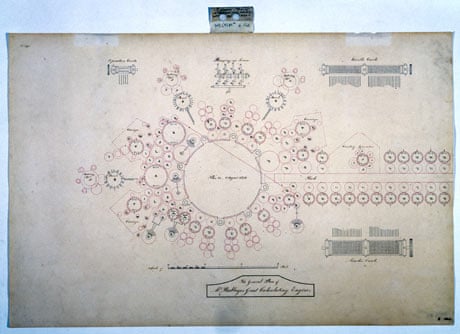In 1837, British mathematician Charles Babbage produced the very first description of a computer. He called it the analytical engine and spent the rest of his life refining, but never completing, it. Last year, I started a charity called Plan 28, dedicated to completing Babbage's computer in time for the 150th anniversary of his death in 2021.
To understand why it's worth building an almost 200-year-old mechanical computer, it's necessary to first understand what a computer is. Although Babbage's analytical engine is entirely mechanical, it has the same essence as a modern computer. That computer essence is one of the important consequences of another British computing pioneer's work, a century after Babbage. Exactly 99 years after Babbage invented the computer, Alan Turing wrote his now famous paper describing the universal Turing machine. An important mathematical idea arising from Turing's paper and another by American mathematician Alonzo Church is that all computers have the same capabilities, no matter how they are constructed. Because of the Church-Turing thesis, as it is called, we know that Babbage's analytical engine (with its levers and cogs), Turing's theoretical machine and the latest tablet all have the same fundamental limits. Of course, Babbage's machine would by modern standards have been painfully slow.
But Babbage's machine has something that no others have: its sheer scale. It is about the size of a small steam locomotive, which means that people will be able to appreciate the architecture and internal workings of a computer by watching it in operation. The analytical engine has a central processor (today's "chip") and expandable memory, is programmed with punched cards, and even has a printer. And Babbage hadn't forgotten the human operator: a bell is included to summon help in case of a problem.
Once complete, the machine should be able to run some of the programs that have been waiting almost two centuries for the computer they were designed for to be finished. Babbage prepared punched cards containing programs (perhaps containing programs worked on with collaborator Ada Lovelace), that have to this day been carefully preserved.
It's known from the construction of one of Babbage's simpler machines, The Difference Engine No 2, that he was no foolish dreamer. His machines were well designed, reliable and could have been built with the tools and methods of his age. The big question with the analytical engine is "Would it have worked?" It's a vital question because at something like 40,000 parts, the analytical engine is twice as complex as the latest Rolls-Royce Trent 1000 jet engine. If the analytical engine is shown to work, then an interesting historical question can be asked: "Could there have been a computer age while Queen Victoria was on the throne?"
Of course, there was no Victorian computer age. That happened in part because Babbage failed to persuade the UK government to keep backing his project, as he created exasperation by constantly changing his designs and goals. Babbage was both computer pioneer and failed government IT project pioneer. Cost overruns and changing plans seem to have been a problem right from the start of computing history.
Now Plan 28 – named after one set of Babbage's plans – has assembled the leading technical experts on his designs and just started fundraising. The first stage of the project involves studying the thousands of pages of handwritten notes that Babbage left behind, to determine what exactly needs to be built.
Once the study is complete, we'll be building a 3D physical computer simulation of the analytical engine to verify that his design is workable. Reaching that stage is likely to cost about £250,000. Only once the feasibility of building the machine has been established will the much larger fundraising effort needed for the actual construction begin. But what we hope to do is create a working monument to the man who conceived the computer, and to inspire today's scientists and engineers to dream a century into their future.
